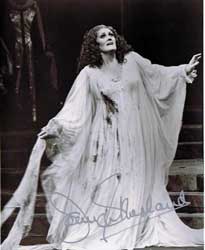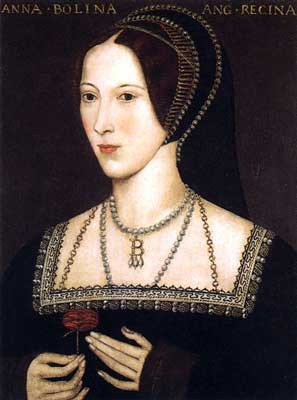
Lucia di Lammermoor

It is ironic and tragic that Gaetano Donizetti, author of the most famous mad scenes in the history of opera, should himself have died in a state of utter madness from what has been described “as the most terrible of all brain diseases.”1 In two of his operas, Anna Bolena and Lucia di Lammermoor, the main female protagonists are utterly psychotic as they sing their way through some of the most beautiful operatic music of all times.
Anna Bolena is the opera based on the tragedy of the Anne Boleyn, the second wife of King Henry VIII, imprisoned in the Tower of London and charged with infidelity and treason.2 Historical records indicate that during her seventeen days of incarceration while waiting execution, she became mentally deranged, confused, agitated, now laughing now weeping, suddenly switching from one mood to another, bizarre and inappropriate in her pronouncements. In Donzetti’s opera these traits are exaggerated. She hallucinates, makes incongruous bizarre statements, and in the course of several beautiful arias has only brief periods of sanity. In the more famous second operatic mad scene, Lucia di Lammermoor, a young woman already prone to visual and aural hallucinations is coerced into an unwanted marriage, but experiences a complete psychotic breakdown when the true lover suddenly appears and reproaches her for her faithlessness. In the famous mad scene she descends on stage from her bed chamber wearing a bloodstained nightgown, having murdered her newlywed husband during the night.2 She has completely lost contact with reality as in a series of arias of unsurpassed sublimity she absurdly flits from one subject to another, showing that she has totally lost her mind.

The author of these scenes, Gaetano Donizetti, was born in Bergamo, Italy, in 1797, reportedly in a windowless cellar. His family was indeed very poor, but he was taken under the wing of a famous German opera composer, received a good musical education in his native city and in Bologna, worked in Naples, Vienna, and Paris, and became one of the greatest composers of this time. During his lifetime he composed 75 operas, 16 symphonies, 19 string quartets, 193 songs, as well as duets, oratorios, cantatas, concertos, sonatas, and chamber music. In addition to Lucia and Anna Bolena, he is remembered especially for Don Pasquale and The Elixir of Love, but also for Maria Stuarda, the Daughter of the Regiment, and La Favorita. Interestingly, Donizetti scored the mad scene using a glass harmonica to accompany this famous aria (modern performances substitute two flutes). The glass harmonica in late 18th and early 19th century Europe was an instrument designed by Benjamin Franklin. The choice of this instrument is telling. Anton Mesmer had used the instrument to treat mental disorders, but after a famous early 19th century performer became insane suspicion linked the instrument to cases of madness.
By the time he wrote Lucia in 1830, Donizetti had already developed certain troubling symptoms—fevers, headaches, convulsions, and gastrointestinal disorders. In succeeding years these symptoms worsened, headaches persisted; he had convulsions, episodes of disorientation, and changes in personality. By 1846 he had become seriously ill; and taken to Paris to see three specialists in mental diseases was found to have become victim” of infection of the great nervous centers.”2 Later that year, made to think that he was traveling to Vienna to compose for the imperial court, he was told at Ivry that his carriage had broken down and that he had to stay in a hotel but was actually locked up in a mental asylum. There he was lied to that his man servant was involved in a robbery and that they were being investigated by the police. In his lucid moments he thought that he was under arrest and wrote pathetic letters to friends asking for help.2

During his admission to the mental asylum his condition continued to deteriorate, and in early 1846 two doctors declared him as being in a “state of insanity and general paralysis.” After seventeen months he was released and taken to his home town of Bergamo, where he died in 1848, psychotic, paralyzed, emaciated, convulsing, and unable to swallow.2 At autopsy there were profound changes in the brain consistent with dementia paralytica or general paralysis of the insane, recognized several decades later as being one of the manifestations of brain involvement by syphilis.
It has been speculated but seems unlikely that Donizetti’s representation of madness in his operas was somehow related to, or facilitated by, or presaging his own mental deterioration. Be that as it may, it in no way detracts from the genius of this man whose operas remain standard repertoire in every opera house of the world almost two centuries later.
Reference
- Davis C, The most deadly disease of the asyldom: general paralysis of the insane… J. of the Royal College of Physicians of Edinburgh 2012, 42:266.
- Peschel E and Peschel R: Donizetti and the music of mental derangement: Anna Boleyn, Lucia di Lammermoor, and the composer’s neurobiological illness, Yale J. of Biology and Medicine, 1992; 65:189.

Leave a Reply